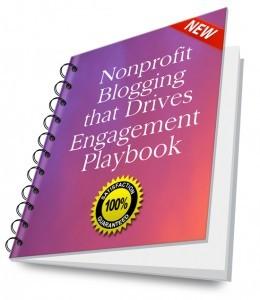
Keep batting your head against the same walls, you’ll be in for a lot of headaches
If you’ve been a part of the Clairification community for any time at all, you’ll know my motto is: “If I know it, I want you to know it.” Life is just too short to keep the good stuff to oneself!
Recently I sat in on Mapping Out Your Nonprofit Calendar for 2018 by Julia C. Campbell. I kid her we must have been separated at birth, because she and I agree on almost everything (her middle name is Claire, so… go figure. Maybe there is something in a name, Shakespeare notwithstanding).
I’ve taken the gist of everything Julia had to say, and wrapped it into this two-part article to help you deal with what are likely the greatest marketing communications challenges facing you in the coming year. Consider these articles your mini-planning worksheet as you walk through my (and Julia’s) prompts below. You’ll end up with a pretty good rough marketing plan draft, and may be surprised how helpful it is just to dump stuff out of your brain onto a sheet of paper.
If you don’t have time now, schedule 30 minutes when you will have time and come back to this.
If you’re ready…
Let’s go!
1. Begin by writing down your marketing objectives for the year ahead.
These don’t have to be perfect. This is not your final draft. It’s your first draft. So think expansively. You can cross things out later when you start getting down to reality.
Here are some goals I’ve heard from some of the nonprofits with whom I work:
- To raise visibility generally
- To increase brand recognition and become a household name
- To get a better grasp on who our best audiences are
- To better prioritize tasks that give the biggest bang for our buck
- To generate greater online engagement to build stronger relationships
- To create a group of online influencers who will share our content with their networks
- To get a better grasp on social media and what we should be doing
- To be consistent with posting content on a regular schedule
- To leverage content across multiple channels, online and offline
- To automate some of what we do so we work more efficiently
- To personalize our communications better
- To build a blog
- To build a better website
- To get a better email provider
- To integrate marketing and fundraising more seamlessly
You may share some of these goals, or you may have different ones.
2. Sort your objectives in descending order of priority.
This is often the most difficult part. Because it requires you to think carefully about goals underlying each objective. In other words, why do you want to do this? If you do this, what will success look like?
For example, if you list “raising visibility” as your purpose, what will this get you? More clients? Volunteers? Members? Donors? Different types of constituents? Or will it simply please your board member who wants to see an article in the local paper? There are no wrong answers; just be honest. This may cause a few objectives to just naturally drop off.
At this point you’re endeavoring to do a preliminary sorting by what’s critical… what’s important… and what’s nice. Because you want to end up with a list of no more objectives than you can reasonably handle. If you find this challenging, it’s okay. Don’t stress about editing yourself too much. You can do that later. Once you’ve taken stock of available resources.
3. Take a moment to reflect on last year’s biggest challenges.
What really got in your way? What kept you up at night? What just turned out to be a big old failure?
Here are some marketing challenges I heard from folks I worked with last year:
- Insufficient budget
- Insufficient and/or untrained staff (especially to manage digital marketing)
- Organizational structure (e.g. siloes)
- Finding new systems to coordinate with existing ones (e.g., email, fundraising database, CRM, monthly giving, P2P fundraising pages, analytics, etc.)
- Finding good vendors to whom to outsource
- Figuring out what social channels in which to engage
- Changing search algorithms to improve organic reach (e.g., Facebook and Instagram)
- Getting people engaged (both staff and constituents)
- Finding enough content
- Not letting go of sacred cows (e.g., low-yielding, resource-intensive events or publications that are beloved by someone at the top, a few wealthy donors or a group of vocal volunteers, etc.)
4. Which challenges will need to be addressed to reach this year’s objectives?
Take inventory. Compare your key objectives with your key challenges. How are the latter preventing you from achieving the former?
If you keep batting your head against the same walls, you’re going to be in for a whole lot of headaches. Now is the time to be honest. Here are some of the types of outcomes you may come up with:
- If we don’t increase our marketing budget, we won’t be able to…
- If we don’t add new skills to our staff, we won’t be able to…
- If we don’t integrate marketing and fundraising, we’ll miss opportunities to…
- If we don’t get a new database/CRM/email server…
- If we don’t hire someone to manage social, we’ll fail to reach…
- If we don’t outsource (whatever it is), we won’t be able to cost-effectively…
- If we don’t figure out which social channels our supporters engage in, we won’t…
- If we don’t identify and engage social ambassadors, we won’t reach…
- If we don’t get clarity on our best online communication styles, we’ll fail to engage…
- If we don’t rethink our newsletter, and keep publishing our hard copy newsletter quarterly, we won’t have resources to…
- If we don’t let go of (sacred cow) we won’t have bandwidth to do something with a higher yield
- If we don’t create a culture of philanthropy, we’ll miss opportunities to tell our compelling stories.
Summary
- Write down your marketing communications objectives, keeping in mind how they’ll help you achieve your revenue generation goals.
- Sort your objectives by priority, endeavoring to develop a manageable list.
- Identify challenges that may get in the way of success.
- Compare your top objectives with your top challenges.
- Take stock of challenges that absolutely must be addressed if you’re to get where you’re going.
Next week, in Part 2 of this two-part series, will look at some fresh ideas for the year ahead and figure out what you may need to do differently. Because you know what they say about the definition of insanity, right?
Want to Drive Greater Engagement with Constituents?

4 Companion Volumes to drive awareness and support
The Nonprofit Blogging That Drives Engagement Playbook will help you develop a comprehensive content marketing strategy that will drive folks to your website to take the actions you want them to take! I consider blogging to be a great shortcut to successfully engaging folks and converting them to donors. I’ve taken everything I’ve learned about blogging and engaging nonprofit communications and tucked it into 4 handy no-nonsense guides to help you become a “player” in the blogosphere. As will all my products, this comes with a 30-day no-questions-asked 100% refund guarantee.






Really helps to see these marketing hurdles explained. Clear solutions make a big difference. Thanks for posting.